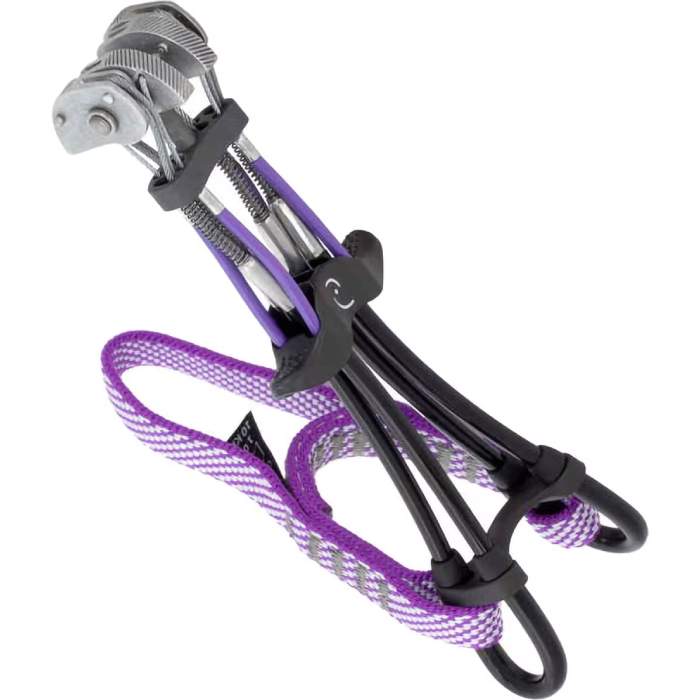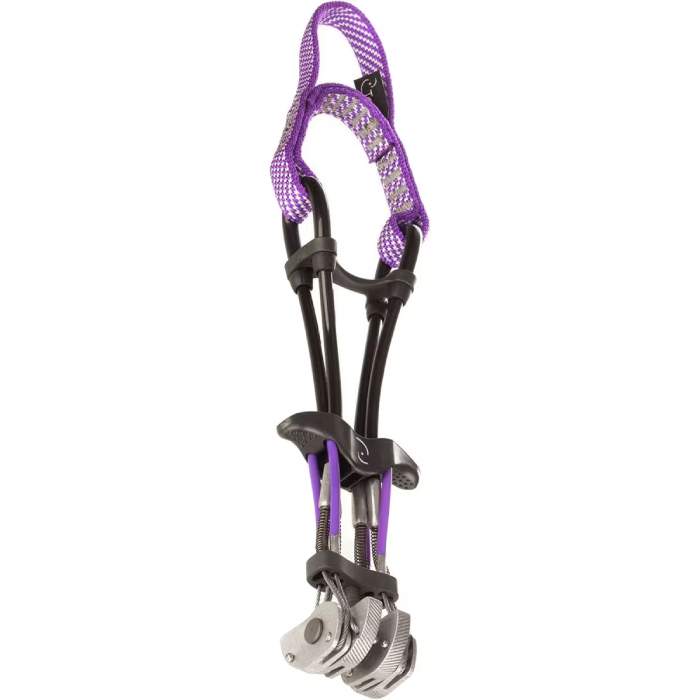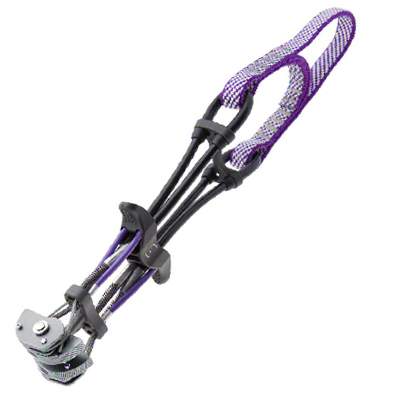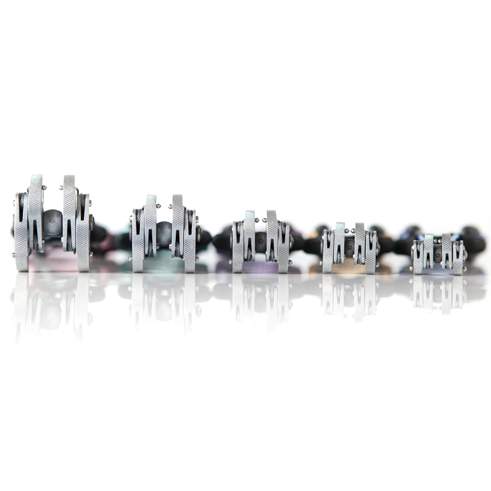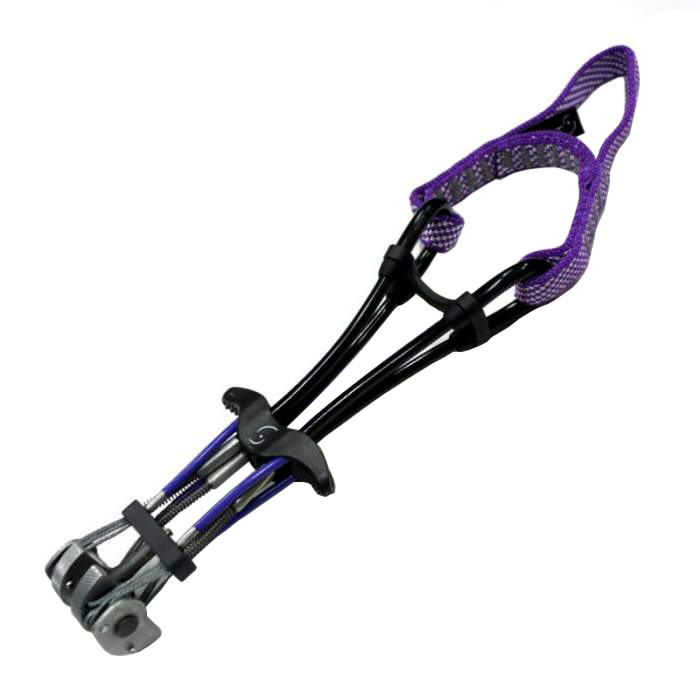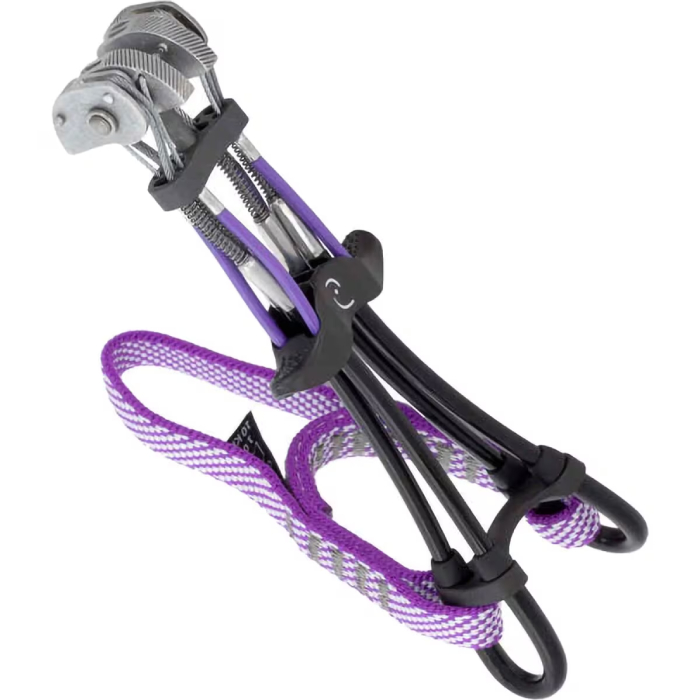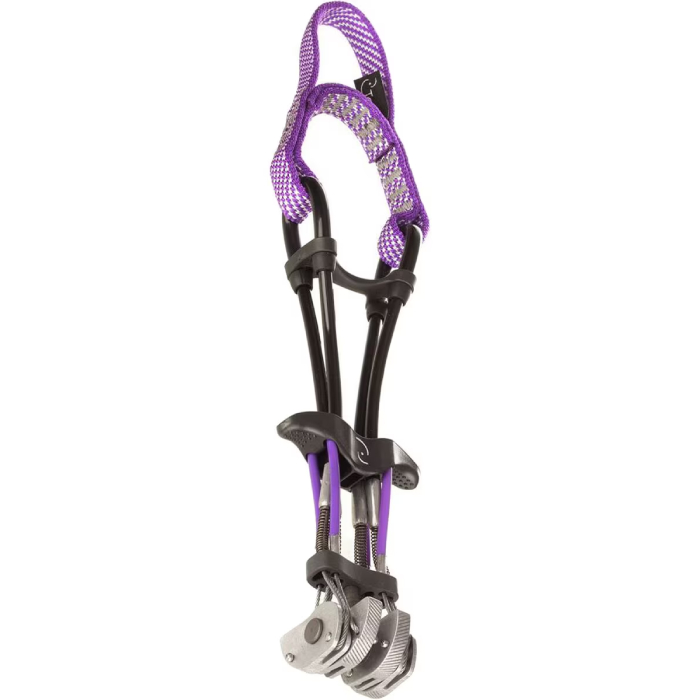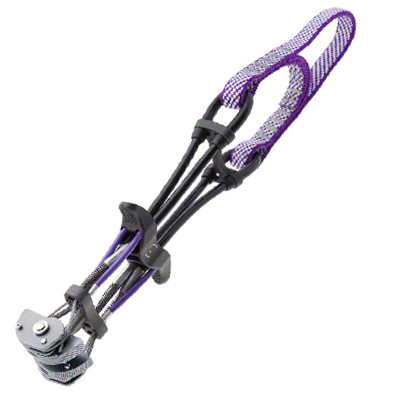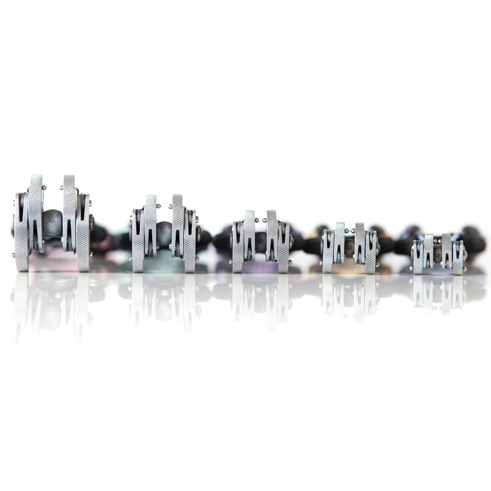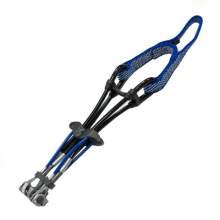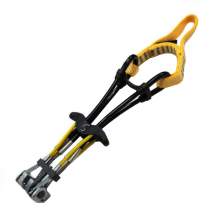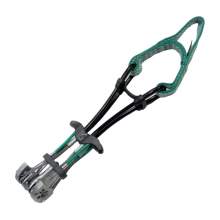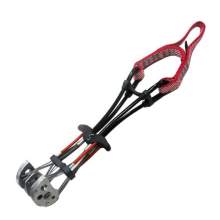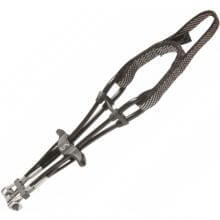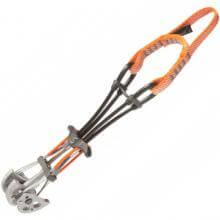Totem Cam 1
Description
The new patented Direct Loading Camming Device system (US patent 7,014,156) applies a perfectly equalized load directly onto each lobe, eliminating the risk of inactive lobes and therefore any outbalanced forces that might compromise cam placement stability. Where rock contact with four cam lobes is not possible, Totem Cam still offers the option to load just two lobes.
Totem Cam is Quality Made. We manufacture the main components and we undertake the entire assembly process. Eight years of product development have provided us with the technical skills to ensure a quality job. Totem Cam is CE certified by Cete Apave Sudeurope (Notified body number 0082).
• Well-sized cam heads with the narrowest head width for the smallest sizes.
• Very flexible cam body.
• Easy handling even with hand gloves.
• Loadable on just two lobes.
• Great holding power. Comparing with a regular Spring Loaded Camming Device system (system used by most other brands),
Totem Cam is like a regular SLCD with approximately 13 degree cam angle combined with hard 7075-T6 aluminum lobes.
• Less walking due to strong springs and good flexibility.
• Good expansion range (1.64:1)
• Light and durable.
• Diagonal micro-teeth on the cam lobes’ friction surface provide an additional grip and do not affect the logarithmic shape, as
where standard steep straight teeth are used, so constant holding power and cam placement setting are not compromised.
• Trigger wire ropes directly attached to cam lobes. Strong and durable.
Retail price
When you click a link below and then checkout online, no matter what you buy (climbing gear or not), we get a small commission that helps us keep this site up-to-date. Thanks!


Weight (g / oz)  Weight (g / oz)In grams and ounces, the weight, as stated by the manufacturer/brand. | 95.0 g / 3.35 oz |
| Cam Head | 4 lobes, single axle |
| Offset | No offset |
| Stem | Flexible no stem |
| Sling | (double sling loop) |
| Camming Angle | 13.00° (purposefully not a consistent cam angle) |
| Active Strength | 10 kN |
Cam Range (mm / in)  Cam Range (mm / in)In millimeters and inches, the maximum dimensions of the cam lobes when shut tight and fully extended. Since the "usable" range is so debatable, all manufacturers now list the full dimensions to avoid selling themselves short. For offset cams, we'll list the max dimensions possible and then afterwards list each of lobe dimensions. | 20.9 - 34.2 mm (0.82 - 1.35 in) |
| Materials | Main Material: 7075-T6 aluminum |
| Certification | CE |
My best friend
by anonymous on 03/22/2020Totem Cams are a very specialized piece of equipment. Due the unique holding power and double stem they are ideal for traditional climbers who are looking for that piece they can rely on in a “not so good placement”. I purchased these cams when I was working a project that needed an off-set placement. I’m very happy I went with Totems over standard off-set cams because they are way more versatile and work just as good if not better.
All in all the Black and Orange Totems are excellent additions to the Totem range. The Black Totem is a personal favourite and I almost always carry it due to its size. The Orange Totem is slightly held back by the non-conventional stem which makes it harder to place, although it still has a place on your rack when climbing rock without much friction or if you need the narrow head width.
The main reason to get this cam is it will fit in awkward pods that you often encounter on big walls. You can also load the cams with only two lobes contacting the rock. This fact, coupled with their increased holding power in flaring placements, makes them an ideal specialty aid piece.
We appreciated the increased range that these cams have; although not the best range we tested, it's pretty good.
The thing that we liked most about these is the innovative thinking that went into the design. Totem Cams make a complete departure from traditional cam design and create something that is new, exciting, and functional.
The Totem is an excellent all-rounder, with a number of specific benefits; furthermore, it is exceptionally well made and as a result justifies it's price tag. For those wishing to go big-walling/aid climbing look no further, this is the cam for you. For those wishing to use it trad climbing, this is the perfect cam for marginal/insecure placements and a joy to use and place. One other piece of good news for those wishing to get a long life out of their Totem, you will be glad to hear they operate a repair service.
They looked very different to any other cams on the market with that U shaped tape and A shaped stems, both of these features proved very useful when we tried them out climbing. The spacer that separated the stems felt comfortable to use with both my thumb tip and the in Thenar (the area where your thumb meets your hand) area, there was a slight issue with gloves on, but the flexibility of the stems did allow the stems to widen out. Further up the stem lead to the trigger which was made from injection moulded plastic, this was ergonomic enough to use with my fingers but if you’ve got fingers like sausages then they could become a little more uncomfortable with prolonged use, flattening out and enlarging the trigger would solve this easily.
These new cams from Spain’s Basque Country cover five sizes, ranging from fingertips to small hands. The radical feature of their design is the way a load activates the cams: Instead of the stem and axle bearing the load, as in most cams, each Totem lobe is attached to an individual spring-action cable extending to the clip-in sling. This allows more secure two-cam placements for aid climbing, and the unique cabling and lobe design give the Totems more holding power in downward flaring cracks and pods. They also have more range than other single-axle cams. Testers felt they provided more placement options than many cams and could be a real boon for clean-aid climbing. The cabling is also super-flexible in all directions, further enhancing placement options and stability; testers found they tended to walk less than other cams. Totems are not widely available at retailers, but you can order them at the company website with free shipping to the U.S.—and there’s a 10 percent discount for five or more, bringing them in line with many other cams’ pricing.
A well-spoken and easy to understand technical overview and personal review, with comparisons to other cams by Josh Higgins.
The UIAA equipment standard provides a baseline for equipment performance in a test lab under controlled conditions on new equipment. Although these test conditions are relevant to the conditions encountered climbing, conditions encountered at the crags and the condition of the equipment are equally important. This recommendation from the UIAA member federation The British Mountaineering Council (BMC) provides vital equipment information that is NOT explicitly addressed in the standard, particularly failure modes of the equipment and recommendations for the use, inspection, maintenance, and retirement of equipment.
A pictoral representation of the UIAA-125 and EN-12276 standards for frictional anchors (which includes SLCD's [cams] and Ballnuts).
If you want to super geek out, this shows all the formulas that go into the making of Totem Cam's unique lobes.
An order form to get a re-sling, have the trigger wire ropes replaced, or springs replaced for any of Totems cams.
Totem clearly explains how to load two and three lobes and still have a solid placement using Totem Cams.
Actually well-done instructions explaining (words and pictures) where Totem Cams can be used and how to use them.


